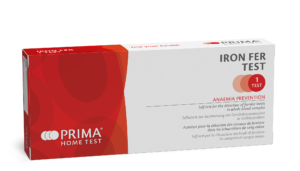Description
Self-test for the detection of total class Immunoglobulins E (IgE) in whole blood samples
VIDEO INSTRUCTIONS
CONTENT
- 1 test cassette
- 1 vial with dropper containing the diluent
- 2 sterile lancets
- 1 pipette for blood sampling
- 1 cleanser gauze
- instructions for use
USE PROCEDURE
- Draw a blood sample by using the sterile lancet provided;
- Collect the sample indicated with the black line by using the capillary pipette provided;
- Deposit the collected specimen into the sample well (S) indicated on the test cassette;
- Add 2 drops of the diluent and wait 5 minutes before reading the result.
RESULTS INTERPRETATION
| Negative | IgE levels are Normal or in any case lower than 100 IU/mL cut-off. |
| Positive | the IgE levels in blood are higher than normal, it is necessary to consult a specialist. |






